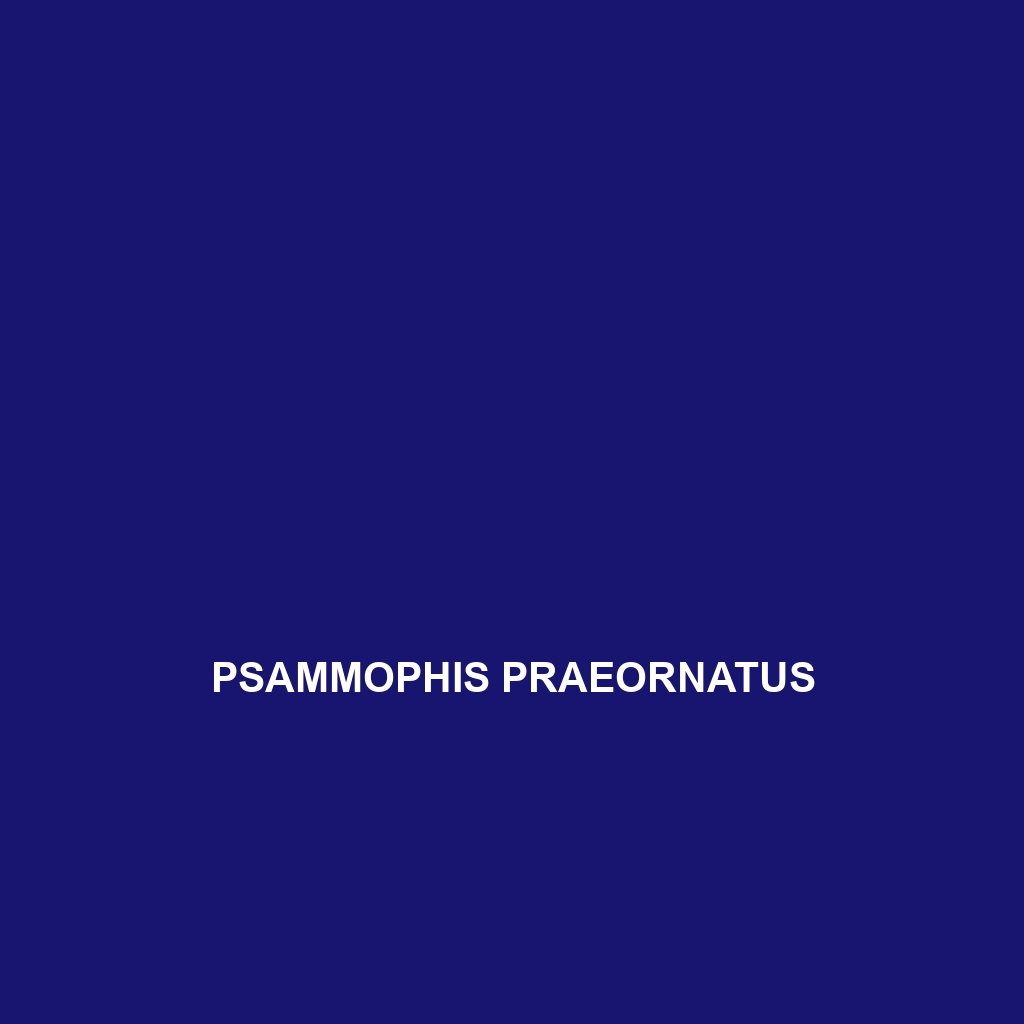<strong>Psammophis phillipsii</strong>, commonly known as Phillips' sand snake, is a slender, 1.2 to 1.5-meter-long reptile found in Africa's arid habitats, characterized by its distinctive brown and yellow coloration with dark crossbands. This carnivorous snake demonstrates impressive speed and agility, predominantly feeding on small mammals and lizards while playing a crucial role in maintaining ecological balance.
Tag: arid region reptiles
Psammophis phillipsii
<strong>Psammophis phillipsii</strong>, commonly known as Phillips' sand snake, is a slender, 1.2 to 1.5-meter-long reptile found in Africa's arid habitats, characterized by its distinctive brown and yellow coloration with dark crossbands. This carnivorous snake demonstrates impressive speed and agility, predominantly feeding on small mammals and lizards while playing a crucial role in maintaining ecological balance.
Phrynosoma blainvillii
<b>Phrynosoma blainvillii</b>, commonly known as Blainville’s horned lizard, is a distinctive insectivore from arid regions of western North America, recognized for its flattened body, spiny scales, and prominent horns. This species thrives in sandy scrublands and grasslands, playing a crucial ecological role by controlling insect populations while exhibiting unique behaviors, such as blood expulsion to deter predators.
Phrynocephalus meridionalis
<p>Discover the <b>Southern Pygmy Gecko</b> (<i>Phrynocephalus meridionalis</i>), a small, agile lizard found in arid regions of Central Asia, known for its remarkable adaptability, unique leaf-shaped tail, and distinctive mating rituals. Thriving in rocky terrains, this insectivore plays a crucial role in regulating local insect populations and maintaining ecological balance.</p>
Pedioplanis undata
Discover the <b>Pedioplanis undata</b>, commonly known as the sand lizard, a diurnal insectivore native to southern Africa's arid regions. With its distinctive mottled coloration and exceptional burrowing abilities, this species plays a crucial role in maintaining ecological balance while thriving in sandy habitats.
Pachydactylus macrolepis
The Pachydactylus macrolepis, or thick-toed gecko, is a robust, nocturnal insectivore native to arid regions of southern Africa, characterized by its broad feet, distinctive coloration, and ability to regenerate its tail. This gecko thrives in rocky outcrops and sandy dunes, playing a critical role in controlling insect populations and serving as prey for larger predators in its ecosystem.
Pachydactylus gaiasensis
<p><b>Pachydactylus gaiasensis</b> is a medium-sized, nocturnal lizard native to southern Africa's arid regions, known for its sandy brown coloration and large toes adapted for sandy terrain. Primarily insectivorous, it plays a crucial role in controlling insect populations while exhibiting fascinating survival adaptations such as tail regeneration.</p>
Pachydactylus fasciatus
<p><b>Pachydactylus fasciatus</b>, known as the banded gecko, is a nocturnal insectivore native to the arid regions of southern Africa, recognized for its distinctive banded coloration and large webbed feet. This adaptable species thrives in rocky terrains and grasslands, playing a crucial role in its ecosystem by controlling insect populations and serving as prey for larger predators.</p>
Ophisops kutchensis
Introducing the Ophisops kutchensis, a medium-sized lizard native to the arid scrublands and grasslands of Kutch, Gujarat, India. With its slender body, excellent camouflage, and insectivorous diet, this agile predator is vital for controlling insect populations and maintaining ecological balance in its habitat.
Oligodon transcaspicus
Discover the Transcaspian rat snake (<i>Oligodon transcaspicus</i>), a medium-sized, diurnal snake native to Central Asia's arid regions, known for its striking sandy to yellowish-brown coloration and swift movements. This insectivorous predator plays a vital role in its ecosystem, maintaining balance among small mammal and insect populations.









